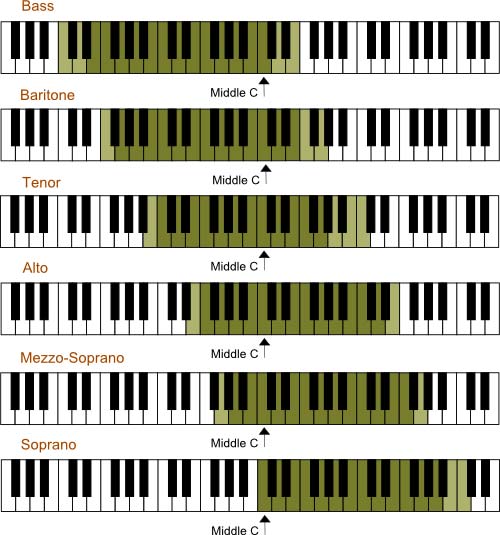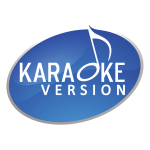
From bass to soprano, find your voice type
When categorizing a voice, several factors come into play: tone, intensity, vocal registers, timbre, physical attributes, and tessitura.
But what is tessitura?
It all began with the system Fach, a method of classifying tessitura. Developed in German opera houses at the end of the 19th century, it was a developed as a means to easily determine the roles of each singer. Tessitura represents the range of notes that a singer can comfortably and easily cover and the volume of sound that can be produced when switching from lowest to highest note. This measurement doesn't mean that the singer is incapable of reaching certain notes, rather tessiture refers specifically to the notes that can be hit without strain.

In order to find where you fit along the scale and what type of voice you have, here are the different categories, from lowest to highest:
Bass
From D2 to E4The deepest of all voice types and a rarity, it is divided into two categories:
- The counter bass or the singing bass, sharper and more lyrical.
- The noble bass or low bass, broader at ease with a deeper notes.
Baritone
From G2 to G4The most common of male voice types, the baritone falls between tenor and bass and has a powerful masculine presence distinguashed by two variables:
- Lyric Bariton flexible, warm and melodic, chaleureuse et mélodieuse.
- Dramatic Bariton characterized by its elasticity, it's solemness and it's generous voice.
Tenor
From C3 to B4The highest, and also the most powerful of voice types for men, Tenors can be categorized by the same distinctions as that of sopranos :
- Dramatic Tenor , strong and powerful, full, but with less agility.
- Spinto-lyric tenor , characterized by a strong loudness and timbre presence, while still reaching high notes.
- Lyric Tenor, demonstrates skill in treble, with full timbre.
- Light Tenor, showing a certain fluidity in high notes.
- Counter-tenor, measured by the ease and mastery of a very shrill note.
Some famous tenors: Freddy Mercury, Luciano Pavarotti, Michael Jackson, Roberto Alagna, Enrico Caruso
Countertenor
From G3 to C6The rarest voice type amongst men, a countertenor is the male equivalent of the mezzo-sopranos and sopranos with an extended vocal range.
Some famous countertenors: Philippe Jaroussky, Farinelli, Klaus Nomi, Carlos
Alto (or contralto)
From E3 to F5As the deepest of female voices, as well as the rarest, altos are characterized by a slightly dull timbre. This type of voice is intense and rare.
- Dramatic Alto, deep, powerful and with a heavy tone
- Coloratura Alto, light, flexible and holds notes
- Lyric Alto bas, lighter in timbre and less flexible
Mezzo-Soprano
From G3 to A5The second highest register for more classical female voices, mezzo-soprano is distinguished by a lower range and a deeper, warmer timbre. This voice type is different from sopranos as it has a tessitura that is lower with a more profound and warm timbre. A majority of secondary operatic repetoire are written for this voice type, composed of the following three variants:
- Dramatic Mezzo-Soprano, rich, powerful and with a medium to warm high register
- Coluratura Mezzo-Soprano, flexible, rich and with low to high register
- Lyric Mezzo-Soprano, smooth and versatile
Soprano
From B3 to G6 This is the highest of vocal ranges, normally reached only by females and children. It is divided into five categories :- Coloratura Soprano
- Light Soprano léger
- Lyric Soprano
- Spinto Soprano
- Dramatic Soprano
Some famous sopranos: Mariah Carey, Kelly Clarkson, Sarah Brightman, Maria Callas, Nathalie Dessay, Montserrat Caballé, Barbara Hendricks.
So you've found your voice type? Now it's time to find the perfect song!
Published on: 1 November 2015




Hope that helps!